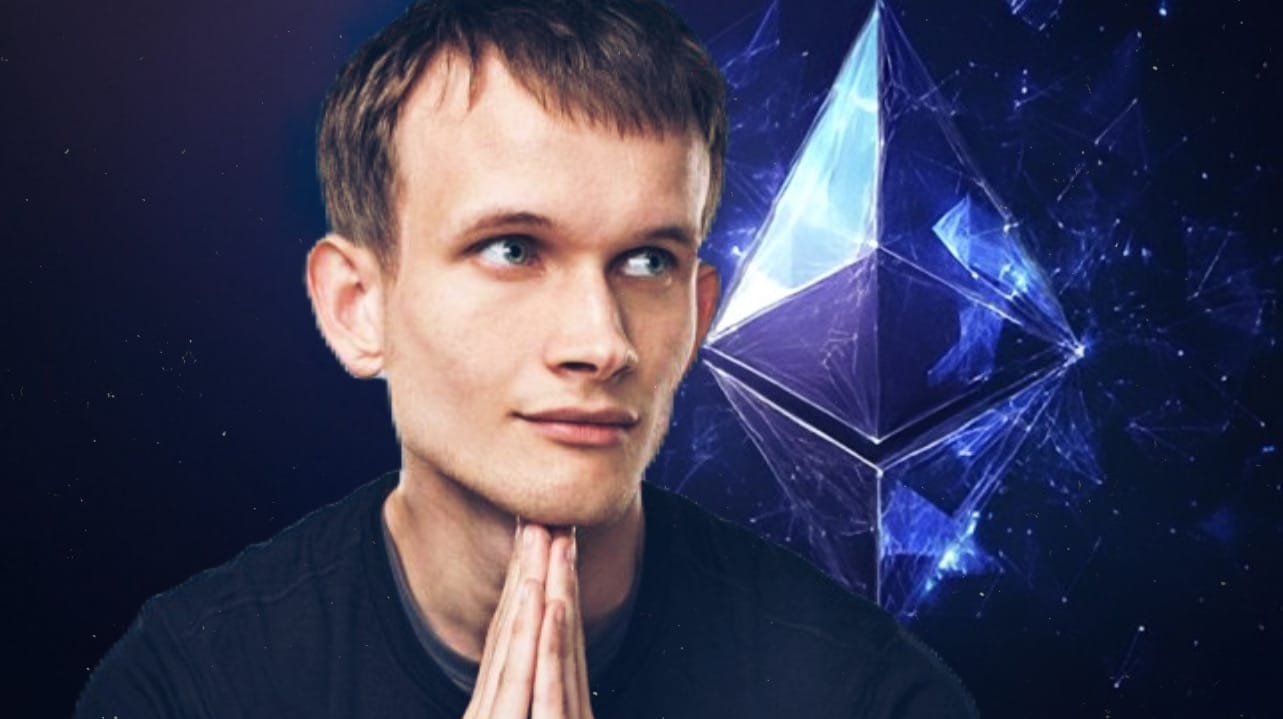Vitalik Buterin on Ethereum’s Legacy and Path to Becoming the World Ledger

Vitalik Buterin, the co-founder of Ethereum, recently sat down with the Bankless podcast to discuss the blockchain platform’s remarkable journey over the past ten years and his vision for its future. From its humble beginnings as a side project to its current status as a cornerstone of decentralized finance, Ethereum has exceeded expectations while navigating significant challenges.
Buterin’s insights reveal a platform striving to balance its foundational cypherpunk values with the demands of mainstream adoption, all while positioning itself as a global ledger for the digital age. As Ethereum evolves, its focus on privacy, scalability, and a robust multi-layered architecture underscores its ambition to redefine financial infrastructure and trust technologies.
Stay In The Loop and Never Miss Important Crypto News
Sign up and be the first to know when we publishA Decade of Surprises and Strategic Evolution
Ethereum’s origins trace back to a 2013 white paper, where Buterin envisioned a platform for decentralized applications, including derivatives and DAOs. Launched in 2015, the project quickly grew beyond its initial scope, becoming a decade-long endeavor for Buterin. The platform’s openness and decentralization have set a new standard, fostering a mindset akin to the free software movement of the 1980s. Ethereum has been a testing ground for innovative concepts like prediction markets and DAOs, making governance more accessible and adaptable. However, the journey has not been without hurdles. The DAO hack in 2016, which saw 11% of ETH’s supply compromised, and the rapid rise of NFTs were unexpected challenges that tested the ecosystem’s resilience. The DeFi boom, which transformed Uniswap from a nascent project in 2019 to a multi-billion-dollar ecosystem by 2021, further underscored Ethereum’s unpredictable growth.
The platform’s ability to overcome these challenges stems from its collaborative, ecosystem-wide approach. By pursuing multiple solutions simultaneously, from Layer 1 (L1) enhancements to application-layer innovations, Ethereum has fostered synergies that drive progress. For instance, the rapid development of Zero-Knowledge (ZK) technology, which advanced five times faster than anticipated, has strengthened Ethereum’s scalability and privacy capabilities. Institutional and governmental interest, initially surprising, has returned in a more concrete form, signaling Ethereum’s growing relevance. Yet, development has taken longer than expected due to the complexity of software and the team’s commitment to raising standards, evolving from a planned Layer 2 to a robust L1 blockchain.
Looking ahead, Buterin envisions Ethereum as a “world ledger,” a more precise term than the earlier “world computer” concept. This ledger role emphasizes Ethereum’s capacity to register economically valuable states, particularly in DeFi, while clarifying the relationship between L1 and Layer 2 (L2) solutions. ETH, likened to “ink” for this ledger, remains central to the ecosystem’s economic alignment, ensuring cohesion across its diverse community. Buterin’s vision includes a “barbell strategy,” where L1 provides security and censorship resistance, while L2s handle high-frequency operations, maintaining Ethereum’s decentralized ethos without compromising efficiency.
Privacy remains a cornerstone of Ethereum’s future, rooted in its cypherpunk origins. Buterin advocates for making privacy a default feature in wallets, integrating private transactions seamlessly rather than relying on separate privacy-focused tools. Technologies like ZK Snarks and privacy pools, such as Railgun, aim to balance user privacy with resistance to illicit activities, addressing concerns from nation-states while minimizing centralized data collection. This approach not only enhances user security but also positions Ethereum as a safer alternative to traditional systems vulnerable to data breaches.
Scalability is another critical focus, with plans to safely increase L1’s gas limit through innovations like ZK Virtual Machines, history expiry, and block-level access lists. These advancements aim to reduce storage needs and enable parallel transaction execution, enhancing throughput without sacrificing decentralization. Buterin emphasizes maintaining L1’s centrality by encouraging asset issuance on the base layer and improving L2 interoperability, with withdrawal times potentially dropping to as low as 12 seconds. This strategy ensures Ethereum remains a secure foundation for assets while L2s cater to high-speed applications.
Over the next decade, Buterin hopes Ethereum will achieve a technical “finish line,” where ZK Snarks optimize all components, nodes become ultra-light and self-verifying, and privacy becomes integral to the user experience. He envisions a world where finance operates on Ethereum by default, offering users self-sovereignty and the ability to move assets freely across applications. This trustless vision, grounded in cryptography and code verification, aims to become a societal standard, much like clean water today. Ethereum’s role as a global intellectual attractor, fostering innovation in DeFi, prediction markets, and democratic organization, positions it to address pressing social and technological challenges in an increasingly complex world.
Buterin’s continued commitment to Ethereum and broader decentralized efforts, including bio-defense and lower-layer security, reflects his belief in a trustworthy, open digital future. As Ethereum crosses into its next chapter, its ability to balance idealism with practicality will determine its success in shaping a decentralized financial infrastructure that empowers users worldwide. With a clear roadmap and a vibrant community, Ethereum is poised to remain a leader in the blockchain space, redefining how trust and value are managed in the digital era.

